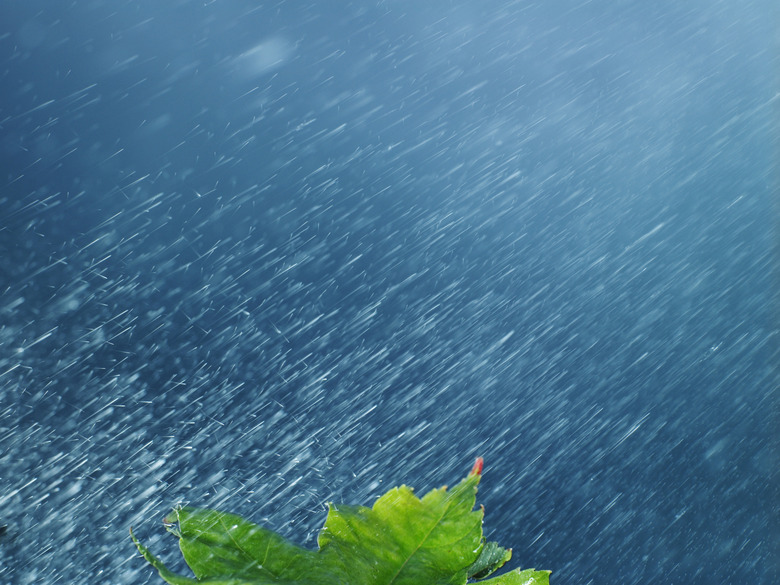The Effects Of Typhoons
Typhoon refers to a tropical cyclonic storm that originates in the western Pacific Ocean; in the Atlantic, the same kinds of storms (tropical cyclones) are called hurricanes. Large masses of clouds that spiral around a central point, or eye, characterize typhoons. Infamous for their destructive powers, typhoons can generate winds of more than 75 miles per hour and cause major flooding through their intense rainfall and storm surges. Their effects range from structural damage to trees, watercraft, and buildings to both immediate and long-term impacts on human life and livelihood.
Buildings and Other Infrastructure
Buildings and Other Infrastructure
Wind and water account for the two most destructive forces associated with typhoons. Typhoons affect buildings and other structures in two ways: through direct force and through projectiles. Direct force occurs when a wind gust slams directly into a building or structure and causes physical damage, such as when wind blows the roof off a home. Wind also inflicts damage by picking up and launching tree branches, building materials, and other debris into structures. The heavy and persistent rainfall and coastal storm surges that typhoons bring can also have devastating effects. In addition to making homes uninhabitable, the flooding associated with typhoons can cripple rescue and aid efforts by making roads impassable.
Trees and Other Vegetation
Trees and Other Vegetation
The impacts of typhoons extend to the natural environment, of course. The storms may damage or destroy trees and other vegetation, including crops that communities may rely on for sustenance or trade, or both. Strong winds can snap branches; detach and injure leaves, flowers, fruits and seeds; and uproot trees and plants. Flooding can over-saturate soils, drown vegetation or kill plantlife via salt spray or the saltwater intrusion produced by storm surges. (It's important to note that native ecosystems in typhoon-prone areas have adapted with these disturbances, which may be important influences on plant succession, and that typhoon winds and floodwaters may in some cases also help disperse tree seeds and seedlings.)
Watercraft and Offshore Operations
Watercraft and Offshore Operations
In addition to causing mayhem on land, typhoons certainly stir up the seas. Individuals on watercraft or those performing offshore operations (such as on oil rigs) not only have to contend with heavy winds and rain, but also massive waves and, in general, turbulent water conditions. Typhoons caused trouble for U.S. Navy fleets in the Pacific Theater during World War II. Today, fishing boats, cruise ships and other vessels rely on sophisticated technology to help them predict and avoid the devastating effects of typhoons.
Impacts to Life and Livelihood
Impacts to Life and Livelihood
The destructive forces of typhoons also impact – and sometimes take – the lives of both humans and animals. While this can occur directly, as when flying debris or collapsing structures injure or kill people, a "silent killer" of sorts is the lack of available resources and infrastructure that may follow typhoon landfall. Flooding from typhoons may destroy food stocks and supplies and spread disease. In communities cut off by typhoons, individuals may not be able to get the medical attention they so desperately need, and starvation becomes a big risk as well.
References
- The Weather Channel: 5 Things Hurricanes Can Do That Are Actually Good
- Smithsonian National Museum of Natural History: Hurricanes, Typhoons, & Cyclones
- National Hurricane Center: Storm Surge Overview
- Texas A&M University: Impacts of Hurricanes
- The Connecticut Agricultural Experiment Station (Dr. Robert E. Marra): Tropical Storms, Hurricanes, Superstorms: Impact & Influence on Tree Diseases
- The Washington Post: How Typhoons at the End of World War II Swamped U.S. Ships & Nearly Saved Japan From Defeat
Cite This Article
MLA
Devaney, Erik. "The Effects Of Typhoons" sciencing.com, https://www.sciencing.com/effects-typhoons-6060279/. 19 April 2018.
APA
Devaney, Erik. (2018, April 19). The Effects Of Typhoons. sciencing.com. Retrieved from https://www.sciencing.com/effects-typhoons-6060279/
Chicago
Devaney, Erik. The Effects Of Typhoons last modified March 24, 2022. https://www.sciencing.com/effects-typhoons-6060279/
